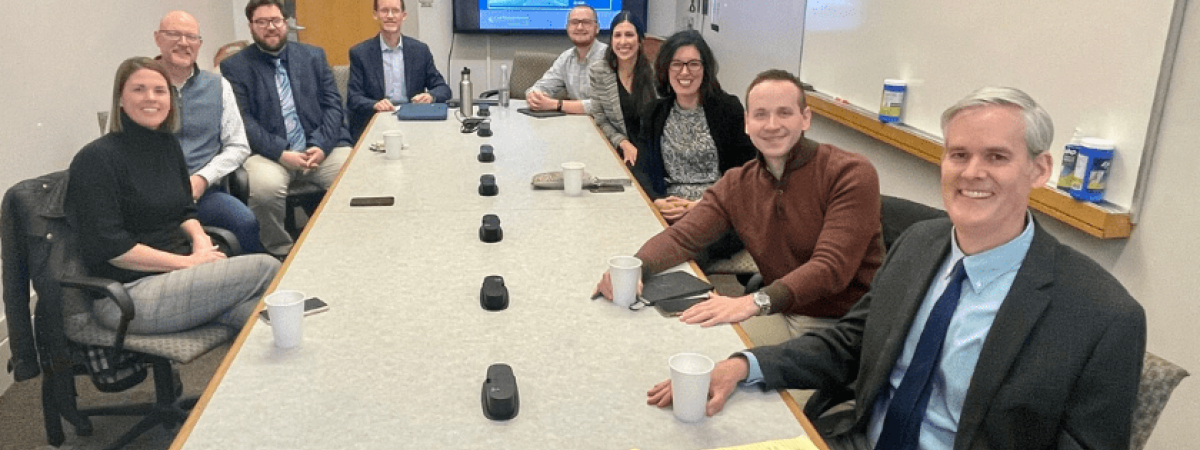A recent study from the Urban Development Lab sheds light on how economic development incentives are performing in places like Cleveland. It finds that “smart” incentives—those selectively awarded, monitored and capable of adaptation—yield greater community impact. A group of CWRU Law students played an instrumental and immersive role in this research.
“We took an ‘on the ground’ approach, " said Professor Matthew Rossman, who authored the study and co-teaches the Urban Development Lab with David Ebersole (LAW ‘08) from the Greater Cleveland Partnership. “Rather than simply relying on statistics about changes in poverty rates or job growth, Lab students interviewed business owners, community leaders, and residents in the neighborhoods we studied to understand which incentives are making a meaningful difference.”
Altogether, the Lab examined over 100 businesses and conducted nearly 30 interviews in six neighborhoods that are close to Case Western Reserve’s campus (Hough, Glenville, Central, Fairfax, St. Clair-Superior and Buckeye-Woodhill). Each student tracked the use of one of four distinct incentive programs in those neighborhoods - Opportunity Zones, New Markets Tax Credits (NMTC), the Neighborhood Transformation Initiative (NTI) and the Paycheck Protection Program (PPP) - before contacting business and other community stakeholders to request interviews.
The students also took an active role in deciding how to organize and coordinate their work.
“The leg work was not just reading and writing like a lot of other law school classes,” said Elena Barone (LAW ‘23), a member of the Fall 2022 Lab cohort. “Every step of the way was a collaborative process—from deciding upon how to focus our interview questions to presenting our findings.”
Following the research phase, the students combined their research and gave a presentation to community leaders and local government representatives on the performance of the various incentive programs. They outlined their findings and provided recommendations for future initiatives to aid the Greater University Circle area.
“The Lab was one of my favorite, if not favorite, classroom experiences I had in law school,” said Barone. “Unlike many law classes, the class is entirely practical rather than theoretical. We were shown how federal laws play out at the state and municipal level—a perspective that even the lawmakers themselves don’t always have.”
Now published in the Spring 2024 issue of the Washburn Law Journal, their research found that New Markets Tax Credits fared best among interviewees as an incentive they thought yields significant community benefits. Successfully competing for NMTCs requires a strong showing of financial plans and a detailed outline of community benefits, Rossman said. “You have to be able to show how each dollar will be used and to what effect,” he added.
“It became really clear through our research that the design of how a program is to be administered has a huge impact on how easily a program’s impact can be measured,” said Todd Robie (LAW ‘23), another member of the Fall 2022 cohort. “Among the programs that our group covered, some programs operated with detailed information tracking throughout the process. Other programs, in contrast, were either rushed into existence or designed to be less closely monitored, and both of these design approaches led to there being more unresolved questions later for those who would want to study and evaluate the programs – such as members of a legislature who might want to decide whether to continue, expand, or replicate such a program.”
As Rust Belt cities like Cleveland strive to bridge the gap between economic development initiatives and tangible outcomes, Rossman said he hopes the insights gleaned from the research will influence policymakers to incorporate smart design in creating new incentives. He also hopes it inspires others to use the Urban Development Lab’s methodology to undertake larger studies of this type.





